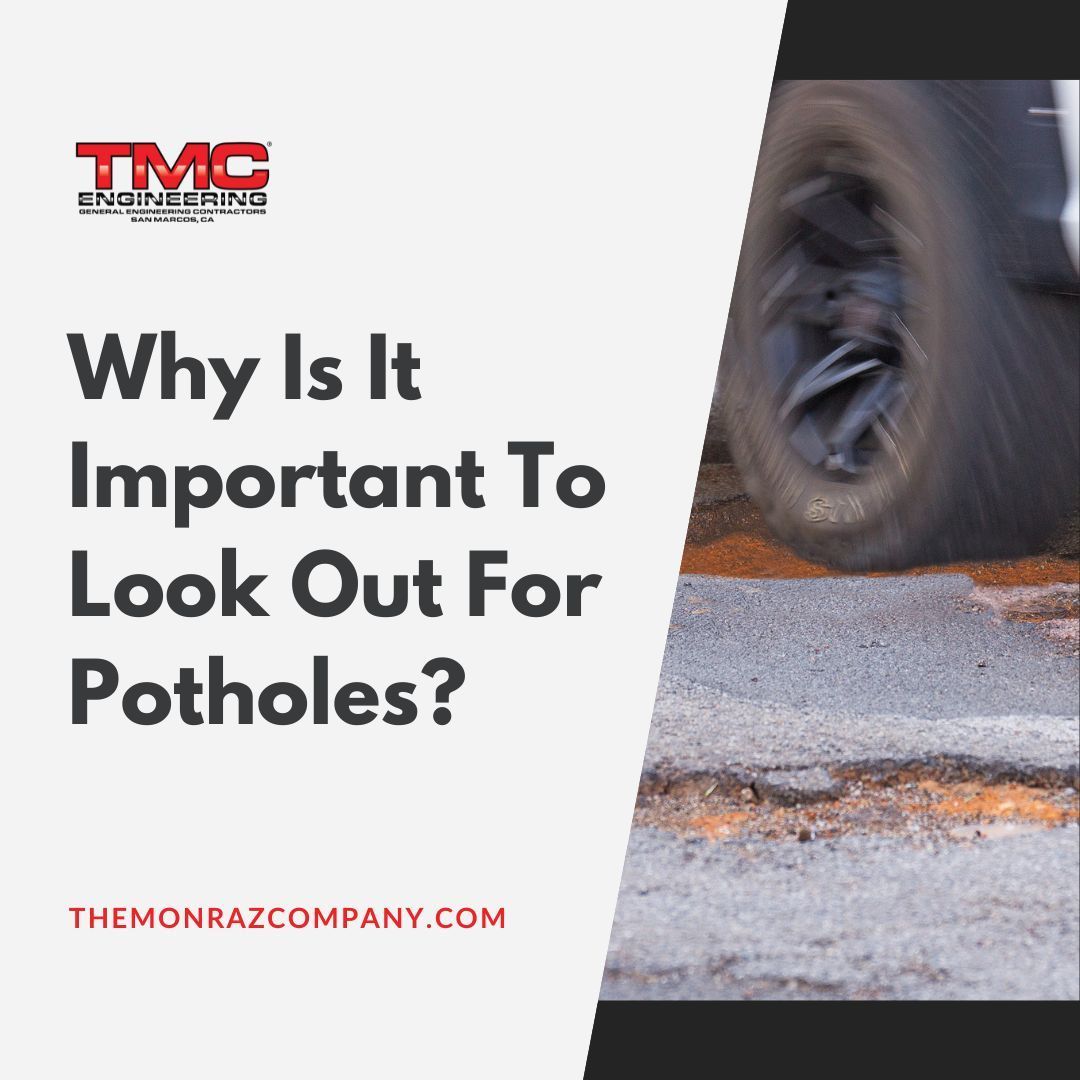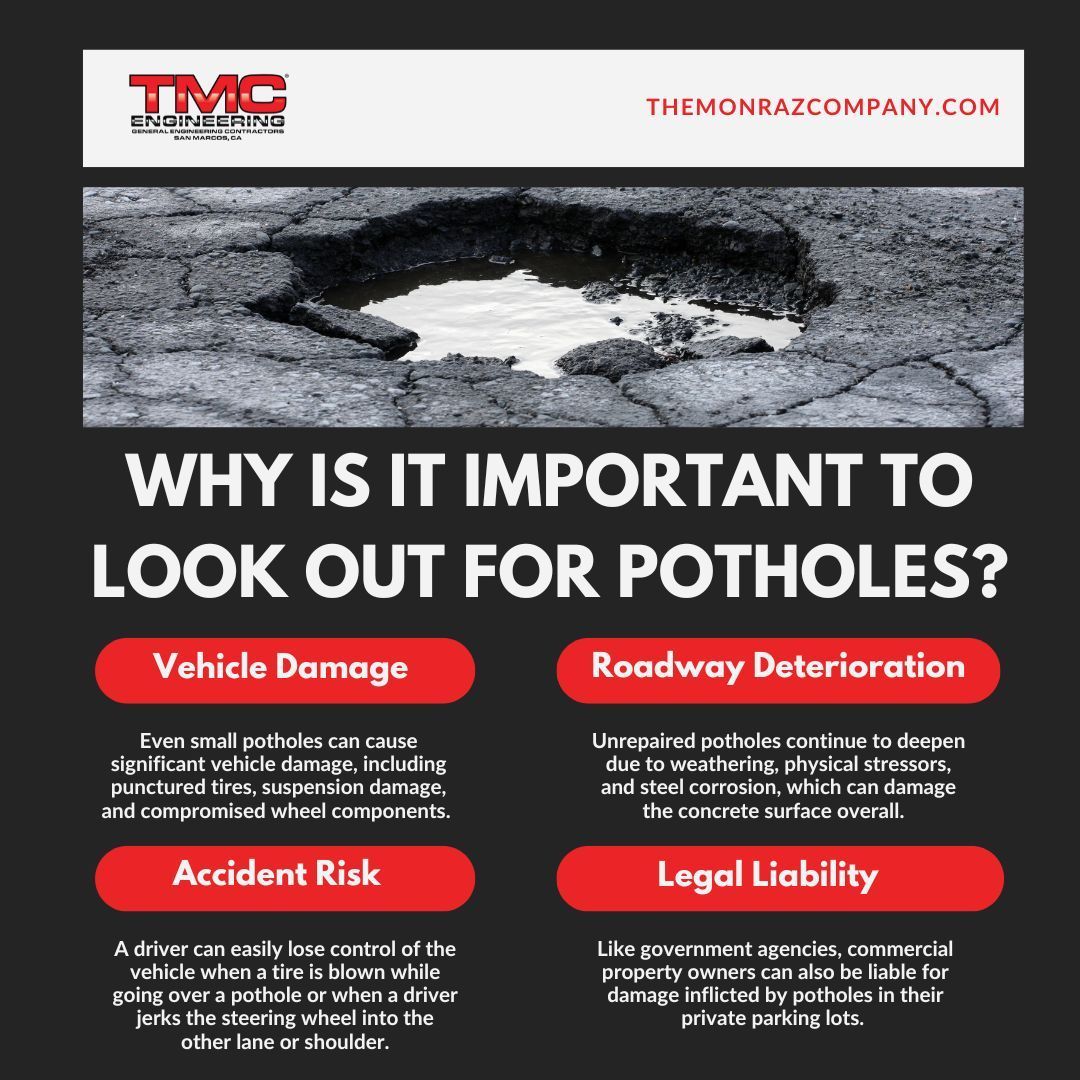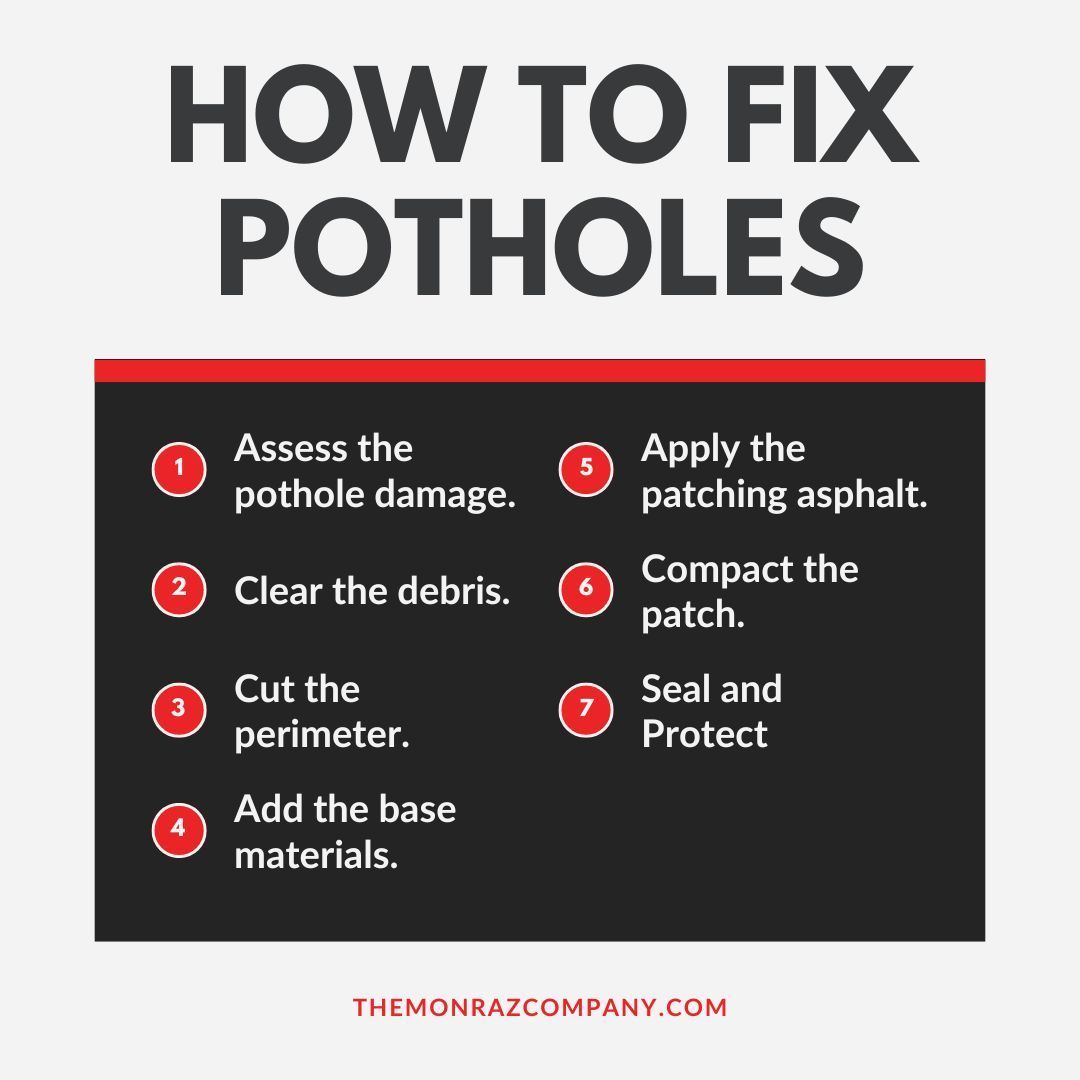Why Is It Important To Look Out For Potholes?
Potholes are one of the most common road hazards you can find on the streets and highways around the country. Potholes form from a lot of sources including water seepage, stress from traffic, freezing and thawing cycles, and poor maintenance. Th ese factors cause the road surfaces to weaken and leads to formation of bowl-shaped depressions in the road surface , which we all know as potholes.
Potholes can be a nuisance for drivers, causing damage to vehicles and even leading to accidents. But beyond the inconvenience they cause, potholes pose a significant safety hazard. This is why it is important to be attentive while driving in order to spot potholes quickly. In this post, we will be discussing more on why it is important to look out for potholes while driving and also the best way to go about fixing them.
If you’d like a quicker or more specific answer to your concrete repair questions, call the experts at TMC Engineering ! If you’re in Southern California, we can help educate you on your problem and perform whatever repair is necessary. We’ve got an expert solution for your concrete or asphalt concern!

Why Is It Important To Look Out For Potholes?
Vehicle Damage
The smallest sized pothole along a highway can cause serious damage to a vehicle. You can easily pop or blow properly inflated tires, damage suspension , or compromise wheel components like tie rods. This is one of the primary reasons you’ll want to avoid potholes!
Accident Risk
Potholes are an accident risk whether the driver is hitting a pothole or swerving to get around it. A driver can easily lose control of the vehicle when a tire is blown while going over a pothole or when a driver jerks the steering wheel into the other lane or shoulder . So, whether you take the pothole or drive around it, you’re still increasing the risk of an accident not only for yourself or other drivers, but also for pedestrians.

Roadway Deterioration
Unrepaired potholes continue to deepen over wet or dry seasons and ultimately quicken the deterioration of the road surfaces. Not only will the weather continue to impact the potholes, but the physical stressors of heavy activity and the corrosion of steel reinforcements beneath the surface can also worsen the pothole and overall integrity of the roadway. This eventually leads to larger repairs down the line, which shows why it’s advisable to fix potholes early.
Legal Liability
You probably already know that government agencies and municipalities can be held responsible for injuries or damage resulting from hazardous potholes if reports of the defects went ignored. But, what about private business owners or those with commercial properties? Yes, they can also be liable for damage inflicted by potholes in their private parking lots.
How To Fix Potholes
Step 1: Assess the pothole damage.
First, you determine the size and depth of the pothole. For larger or deeper potholes, contact professional cont r actors to ensure they are properly corrected with the best equipment and expertise. TMC Engineering is your best bet to get the job done right!
Step 2: Clear the debris.
Sweep the pothole area clean using brooms to remove any loose aggregate, dust, or standing water from the hole before you start patching. Ensure the pothole is fully dry before you proceed.
Step 3: Cut the perimeter.
For potholes over 4 inches wide, asphalt cutters or saws can be used to create vertical sides at least 4 inches beyond the lip of the pothole. This promotes strong bonding of the fresh patch material later.
Step 4: Add the base materials.
Fill the hole halfway with gravel, sand, or crushed stone to within an 1/2 inch of the surrounding pavement surface. Compact thoroughly with a plate compactor or tamping tool.

Step 5: Apply the patching asphalt.
Use a shovel to add hot mix asphalt to the hole, leveling it up to just above the surrounding road surface. Work swiftly before it begins to set.
Step 6: Compact the patch.
Thoroughly compact the new asphalt patch with a roller, plate compactor or tamper. You can also use lutes or rakes to shape it smooth and level with the surrounding pavement surface.
Step 7: Seal and Protect
Apply a sealant coat of asphalt emulsion over the repaired area within 24 hours for added protection against water infiltration. Recheck patches occasionally for settling that requires further topping off of asphalt.
You can also read our post on how to patch holes in concrete for more on repairs on road surfaces.
Look out for potholes when driving and safely avoid them when you can.
Potholes pose clear threats like tire damage, accident risk, hastened surface deterioration, and potential liability issues. This is why it’s important that you avoid potholes safely when you encounter them. However, if you own or manage your own roadway or parking area, you should be practice in fixing potholes to prevent any of these inevitable issues!
For more information on other concrete issues, you can visit our blog. You’ll find guides on various concrete problems and solutions including, why does concrete crack, how to fix potholes in gravel driveway, how to repair a concrete parking lot, and so on.
Here at TMC Engineering , we have a deep commitment to delivering projects characterized by the highest standards for safety , workmanship, and client satisfaction. We aim to provide you with valuable content and insights related to the services our team of experts provides!
Whether you require asphalt paving , striping, sealing , or concrete work , we offer a full suite of transportation construction solutions. Look no further–we’ve got all you need and more!




